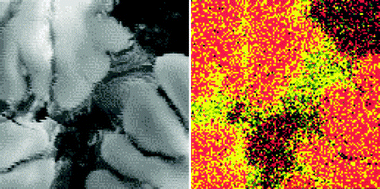Condensed phase zirconium species, produced over the temperature range 200–2500 °C, were analysed using scanning electron microscopy (SEM), energy dispersive (ED) X-ray spectrometry, attenuated total reflectance (ATR) Fourier transform infrared (FT-IR) spectrometry and Raman spectrometry. Very similar results were derived using pyrolytic and non-pyrolytic graphite platforms. Zirconia or zirconia mixed together with alumina in a solid solution were the predominant species on the platform surface up to about 1500 °C. The presence of alumina prevents conversion of the tetragonal phase of zirconia to the monoclinic phase, which is dominant for zirconia alone. Above 1500 °C, aluminium and zirconium follow independent thermochemical transformations; reduction of zirconia and alumina by graphite occurs, but aluminium species are volatilised, whereas some Zr metal remains on the surface after a full heating cycle at 2500 °C, provided that 100 μg of Zr is initially deposited on the platform. There was no evidence that zirconium carbide is formed to any significant extent and so chemical modification by Zr in ETAAS seems to involve the effects of zirconia or Zr metal on the analyte.

You have access to this article
 Please wait while we load your content...
Something went wrong. Try again?
Please wait while we load your content...
Something went wrong. Try again?


 Please wait while we load your content...
Please wait while we load your content...